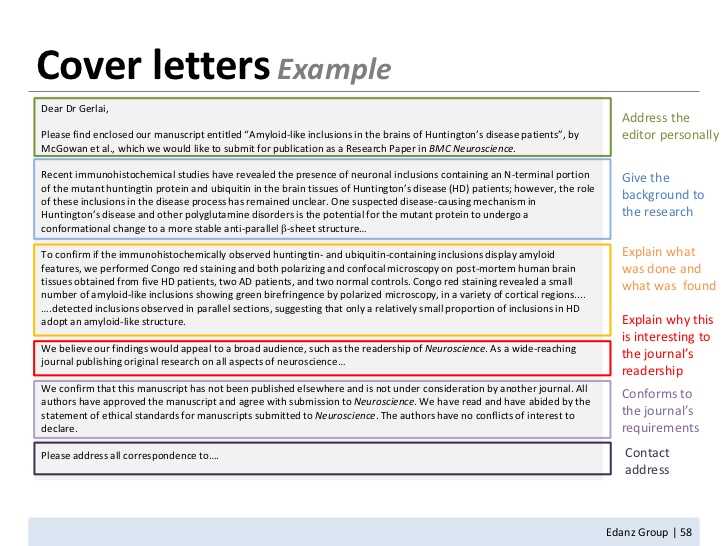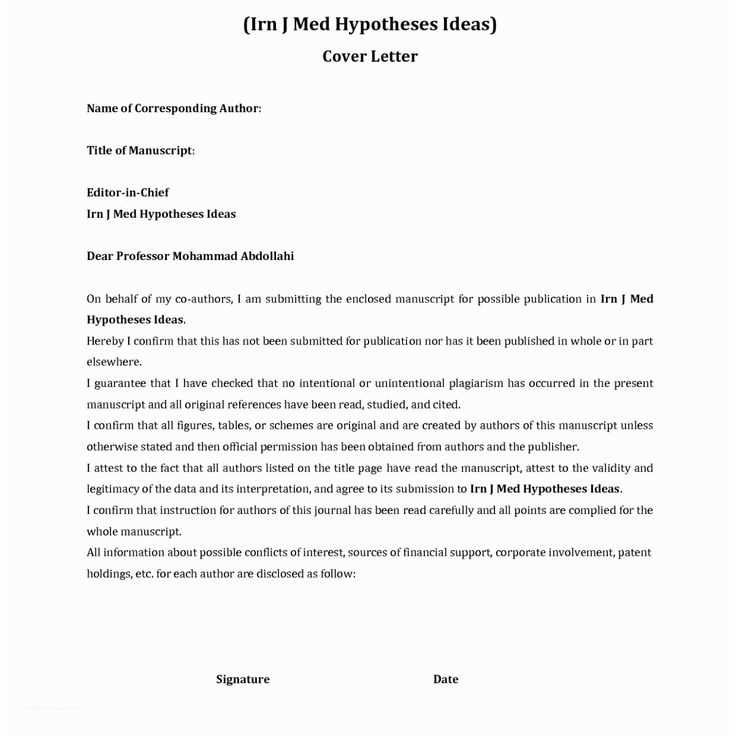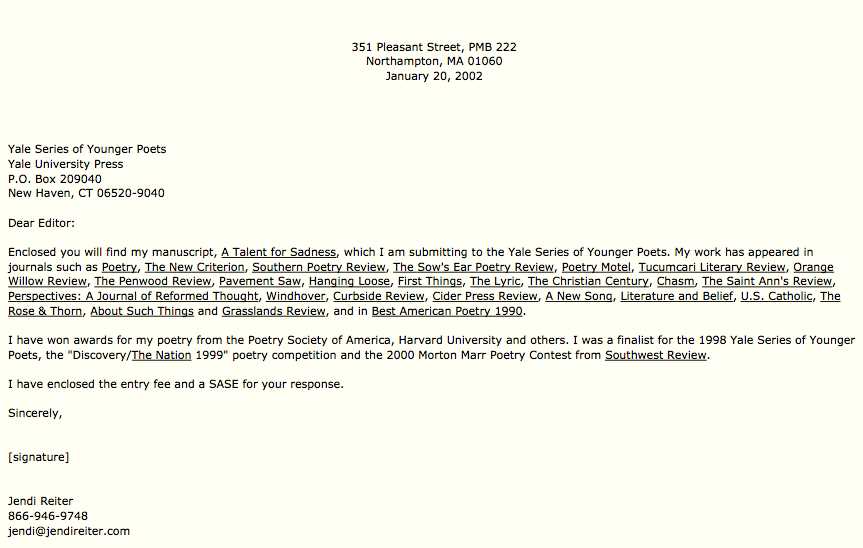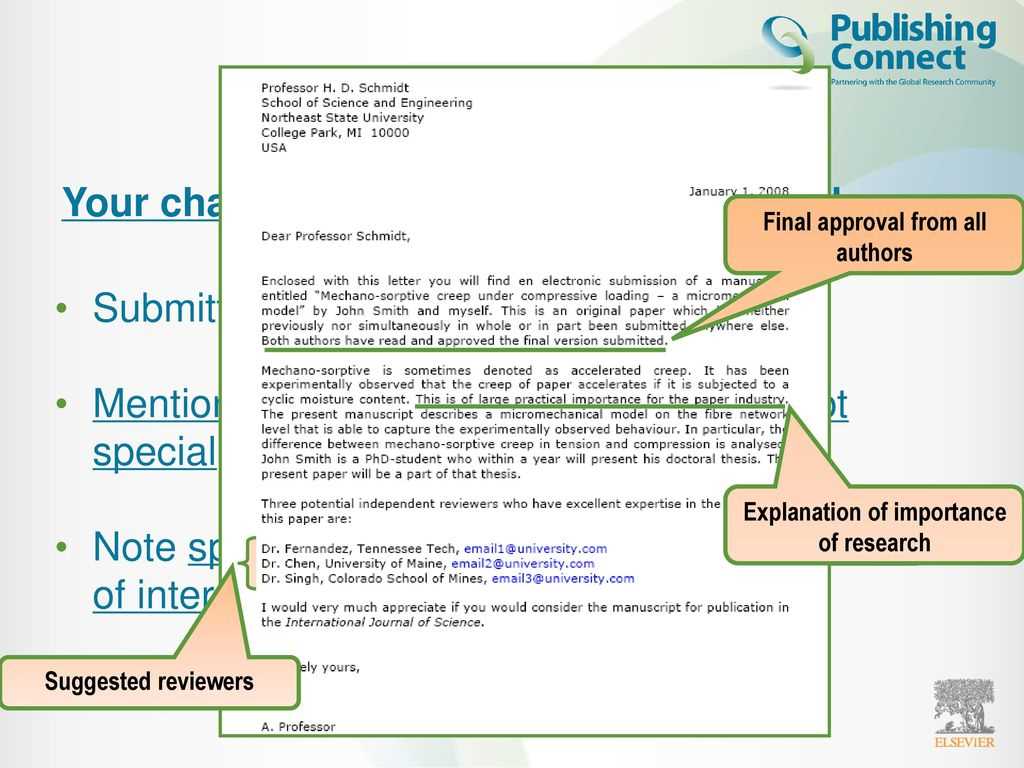Cover letter article submission template

Use a concise and focused approach in your cover letter. Start with a brief introduction that clearly mentions the article’s title and its relevance to the publication you’re submitting to. Show that you’ve done your research on the outlet and explain why your article aligns with their audience or editorial direction.
Highlight the article’s value to the readers. Describe its key points, how it addresses current trends, and the unique angle it offers. Make sure to keep this section straightforward, providing only the necessary details that demonstrate the article’s worth.
Finally, close the letter with a polite yet direct call to action. Express your eagerness for feedback or potential publication and thank them for their time. Ensure that the tone remains professional and appreciative throughout.
Cover Letter Article Submission Template
Begin with a clear and concise introduction. State your name, the article title, and the purpose of your submission. Keep the tone professional yet approachable.
Introduction
Dear [Editor’s Name],
I am submitting my article titled “[Article Title]” for your consideration in [Journal/Publication Name]. This piece focuses on [Brief Description of the Topic], and I believe it aligns with the interests of your readership.
Article Details

Provide a brief overview of the article’s content. Highlight key points that demonstrate its relevance and potential value to the publication. Mention any unique aspects or research that support the article’s contribution to the field.
Thank you for considering my submission. I look forward to hearing from you.
Best regards,
[Your Full Name]
How to Address the Editor in Your Cover Letter

Begin by using a specific name whenever possible. Avoid generic phrases like “Dear Sir/Madam” or “To Whom It May Concern.” If you know the editor’s name, use it directly. For instance, “Dear Ms. Johnson” or “Dear Mr. Smith” creates a personal touch and shows you’ve done your research.
If you can’t find the editor’s name, a good alternative is “Dear Editorial Team.” This strikes a balance between being formal and acknowledging the group overseeing submissions.
Avoid overly casual greetings. Phrases like “Hey” or “Hello” should be reserved for more informal settings. Editors appreciate professionalism, so always keep the tone respectful and polite.
In case you’re unsure about the editor’s gender or preferred pronouns, use their full name or stick with a neutral salutation like “Dear [Editor Name].” This ensures you don’t make any assumptions.
Key Information to Include in the First Paragraph
The first paragraph of your cover letter should immediately grab attention by highlighting the purpose of your submission and your qualifications. Start with a direct statement about the article you are submitting, mentioning its title, and the target publication. This ensures the editor knows exactly what they are reviewing right away.
Article Relevance
Explain why your article is a good fit for the publication. Be specific about how it aligns with the publication’s theme, audience, or ongoing projects. Demonstrating your knowledge of their content helps establish credibility and shows you’ve done your research.
Your Expertise
Briefly highlight your qualifications or relevant experience that make you a reliable contributor. This could include your professional background, research, or prior publications that establish your authority on the topic. Keep it concise and to the point.
| Key Points | Details |
|---|---|
| Article Title | Include the full title of your article. |
| Target Publication | State the name of the publication you are submitting to. |
| Relevance to Publication | Explain why your article fits with the publication’s focus. |
| Your Qualifications | Briefly mention your experience or expertise related to the topic. |
Crafting a Clear and Concise Explanation of Your Article’s Value
Focus on directly communicating how your article addresses a specific need or provides actionable insights. Highlight the key problems your article solves or the questions it answers. Keep the explanation brief but direct–avoid unnecessary details that might dilute the value.
Be specific about the audience your article benefits. Is it aimed at beginners, experts, or a specific industry? Mention this clearly to make it evident who will gain the most from reading it. This allows the reader to instantly recognize if the article is relevant to their needs.
Next, provide a clear value proposition. What makes your article unique compared to others on the same topic? Point out any original research, case studies, or perspectives you offer. Show the practical implications of your content, and explain how readers can apply the knowledge they gain.
Be direct and concise in your explanation. Avoid over-explaining or adding fluff to the statement. Readers will appreciate a straightforward approach that respects their time and attention.
Finally, avoid using vague or broad claims about your article’s worth. Instead, highlight specific elements, such as real-world applications or concrete takeaways, that make your content stand out. This creates a stronger, clearer picture of its value to the reader.
How to Mention Your Previous Work and Credentials
Focus on concrete examples that demonstrate your expertise. Instead of listing general achievements, highlight specific projects or roles where you successfully applied your skills. Be clear about the outcomes or contributions you made and the value you brought to each situation.
Be Specific with Your Achievements
Use data and numbers to show your impact. For example, instead of saying “I managed a team,” say “I led a team of 10 members that increased productivity by 20% within six months.” This makes your experience tangible and measurable.
Relate Your Credentials to the Role
Tailor your previous work and credentials to the job you’re applying for. Show how your skills directly apply to the new role by mentioning relevant tools, methodologies, or expertise. Link your qualifications to the job description to highlight why you’re the right fit.
Formatting Tips for Professional Presentation
Keep your cover letter clean and organized. Stick to a consistent font and size, such as Times New Roman or Arial at 11 or 12 pt. This ensures clarity and readability.
- Use single spacing throughout the letter. Add a line break between paragraphs for easy reading.
- Avoid dense paragraphs. Break them into smaller sections to enhance visual appeal and make the text approachable.
- Ensure proper margins, generally 1 inch on all sides. This maintains balance and prevents the letter from feeling cramped.
Make your contact information stand out. Place it at the top of the page, aligned left or centered, and include your name, email, phone number, and LinkedIn profile (if applicable).
- Use bold for your name to draw attention.
- Consider adding your location (city, state) below your contact details.
Address the hiring manager directly by name, if possible. Personalizing the greeting creates a more engaging and respectful tone.
For the body of the letter, break it down into three sections: introduction, body, and conclusion. Keep each section focused and concise. Avoid overwhelming the reader with lengthy explanations.
- In the introduction, briefly state why you’re applying and how you can add value to the company.
- In the body, highlight your relevant skills and experiences. Use bullet points for key achievements or qualifications to make them stand out.
- Conclude by expressing your enthusiasm for the opportunity and inviting the reader to discuss further.
End with a formal closing like “Sincerely” or “Best regards,” followed by your full name. Avoid informal sign-offs such as “Cheers” or “Take care.”
Lastly, proofread for spelling and grammatical errors. Mistakes can quickly diminish your professionalism, so take the time to review your work thoroughly.
What to Include in Your Closing Paragraph
Conclude with a clear call to action or statement that reflects your eagerness to contribute. Express your enthusiasm for the opportunity and how your skills align with the organization’s goals. Reaffirm your interest in the position and offer to provide additional information if necessary.
Reiterate Your Suitability

Briefly remind the reader of why you’re an ideal fit for the role. Highlight the key skills or experiences that directly align with the requirements outlined in the job description. This reinforces your understanding of the role and your capability to perform it successfully.
Express Gratitude
Thank the reader for considering your application. Acknowledge their time and express your appreciation for the opportunity to apply. This leaves a positive final impression and shows respect for their decision-making process.